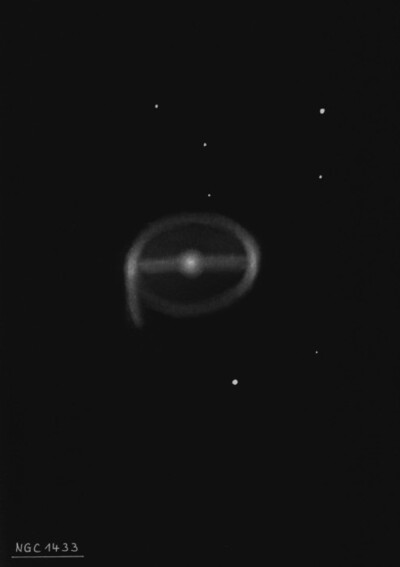
This barred spiral is the brightest member of the NGC 1433 group and part of the Dorado Cloud complex that includes NGC 1512, 1448, 1493 and 1411.
James Dunlop discovered NGC 1433 = D 426 on 28 Sep 1826 with his 9-inch f/12 speculum reflector and described "a very faint nebula, about 1' diameter, rather elliptical in the parallel of the equator; with a brightish point or condensation of the nebulous matter, a little to the preceding side of the centre." John Herschel first logged the galaxy on 14 Dec 1835 and recorded (h2580), "B, L, pmE, smbM; 100" long, 60" broad". His second sweep noted "vB, L, mE, vsmbM to nucleus = 10th mag star." Joseph Turner's sketch with the Great Melbourne Telescope on 10 Nov 1877, shows the thin bar running E-W with a well defined, bright nucleus. (p. 149 of his logbook).
300/350mm - 13.1" (2/18/04 - Costa Rica): fairly bright, large, oval 3:2 WNW-ESE, broad concentration with a large halo. The overall dimensions are ~3.5'x2.2'. I had a strong impression of extensions or the beginnings of two spiral arms (sketch made and verified); one arm begins at the west end and starts to curve towards the east on the south side while the other is symmetrically placed on the following end and hooks west on the north side. On images these arms connect to form a perfect barred ring. A mag 12 star lies 2.8' SW of center, beyond the halo.
Notes by Steve Gottlieb